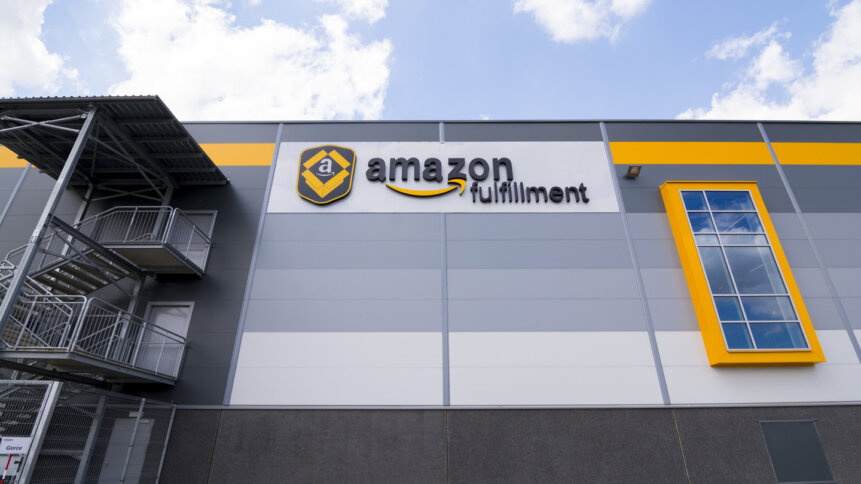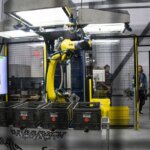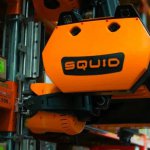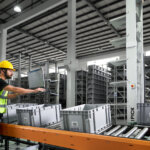Lessons the Amazon warehouse robots can teach us

Amazon, while never likely to win awards for its treatment of its human employees, is undoubtedly shifting the needle on the robotically-enhanced warehouse and supply chain. There are, at time of writing, anything up to twelve different types of robots in an Amazon warehouse, depending on the size, location, and focus of the facility. So what can the deployment and variety of Amazon warehouse robots teach us about our own warehousing operations, and how to use robotics to transform our business?
Firstly, it’s worth noting that Amazon was in a position to be both an early adopter and a prime mover when it came to warehouse robotics. Rich enough to buy Kiva Robotics in 2012 for $775 million, and big enough in the world market to influence other warehousing operations by proving the technology could increase efficiency and reduce costs.
Saying “Be rich enough to be an early adopter, and big enough to make the technology too big to fail” would be fatuous in the extreme, but there’s still a lesson to be learned even from this slim connection with the reality of most companies.
Amazon was looking for ways to improve its warehouse operations. And when it invested, it had done enough research into robotic technology to see that Amazon warehouse robots could be a model which was expandable, and which could continue to add value to its business for generations to come.
That’s worth comparing to the likes of Google, which is arguably by far the more regular innovator. But Google innovates with optimism, as though it’s hopeful that it has the next big thing. Which is why the business life of Google is littered with the bodies of its failed projects.
Significantly, whether it be e-readers or cloud servers, personal assistants to warehouse robots, when Amazon invests in something new, it has a tendency to do it in a heavyweight, long-haul, transformational way.
So lesson #1 from Amazon warehouse robots? Always be looking for ways to make your business better and more efficient, but when you make a move into new technology, make sure you’re able to sustain your investment over time, and that it genuinely drives your business forward.
Upgrade as needed.
Lesson #2 from the Amazon warehouse robots? Remember there are twelve types of robots in some Amazon warehouses right now?
That’s a lesson in itself. There are twelve types not just because it’s fun to have twelve types. Each of the Amazon warehouse robots represents either a new type of job that’s been made more efficient, or an evolution of older robot technology. The lesson? Deploy technology that streamlines your process or makes it more efficient, and don’t be afraid to upgrade as you go.
For instance, the original Kiva robot, the first of the Amazon warehouse robots, was revolutionary in its time, and could lift 1000 pounds on a base that’s 2.5 feet by 2 feet. 1000 pounds, by the way? Roughly five average American 20-year-old men. And the world record deadlift by any human being, ever – 1105 pounds, which involved an incredible musculature and a serious deadlifting belt. If you have the body to lift as much as that small robot, chances are, you’re not using it to lift, stack or pick at an Amazon warehouse.
The Kiva represented unheard-of warehouse efficiency, and Amazon invested heavily in it.
The robotic hulk.
In 2007, Amazon Robotics introduced the Hercules, which as its name suggests was the Incredible Hulk version of the Kiva, able to lift 3,000 pounds. While that kind of lifting power comes with a bigger robot, the Hercules took the revolution of Amazon’s warehouse robots to the next level, meaning heavier pallets were now within the reach of the robotic army.
Lesson? Be aware of advances in technology over time, and immediately grasp the ways in which they can help expand your business operations.
The Pegasus – because we’re on a Greek mythology kick – is essentially the replacement for the original Kiva. It lifts over 1,200 pounds without breaking a silicon sweat, and crucially, it’s significantly lower to the ground. That meant Amazon could maximize pallet-space by storing them lower, and had no need to worry about the lifting capacity of its main, everyday robot.
NB – the Kiva robots are not being replaced across the board with the Pegasus model – at least, certainly not in one sweep. That would represent a very significant outlay, and the value savings would not be likely in every case to recoup the outlay costs. But where they’re judged to be necessary and economically advantageous, such as in warehouses close to cities, where storing more product means fulfilling more city orders faster, they’re being introduced.
Lesson? Always look for ways to maximize your productivity and efficiency. Do the math, and invest as you go in technology that will allow you to add substantively to your process, or carve a little off your quarterly operating costs. But don’t be unnecessarily reckless. Really, truly do the math before investing wholesale in replacement technology.
Hybrid wins.
The Xanthus is a recent addition to the family, and it’s an example of the growing sophistication of Amazon warehouse robots. It’s a hybrid, a combination G2p (Goods to person) and sorting robot that can place eight packages an hour.
Introduced in 2019, it’s already beginning to replace the Pegasus in some fulfilment centers, even while the Pegasus itself is still being rolled out in some city-adjacent location. By combining functions, Amazon is moving closer to a business efficiency – fewer, more versatile robots, which reduce outlay and can perform multiple functions as required.
Lesson? If there’s a technology that cuts your overheads and makes your operation more efficient, don’t be afraid to roll it out, even if it supersedes some existing technology in your organization. The long run is a long way away, and anything that saves you money today is worth investing in today.
The smartest sparrow in the land.
And then there’s the Sparrow. With a less mythical name, you might be tempted to write the Sparrow off, but you’d be a fool to do it. The Sparrow is Amazon’s new picking arm, and it’s about as smart as your family dog.
Whereas previous picking arm robots could only handle packages of a fairly uniform shape, the Sparrow uses AI, computer vision, and importantly, suction cups (like a Dalek’s sink-plunger, sci-fi fans) to use the correct pressure to pick items of varying shapes and curvatures, meaning it represents a huge leap forward in the functionality of picking arm robots.
The lesson of which is that just because a task has been done a certain way since the dawn of time, it doesn’t mean that it has to be done the same way forever. Don’t be afraid to adapt, and to adopt new technologies that revolutionize your processes.










